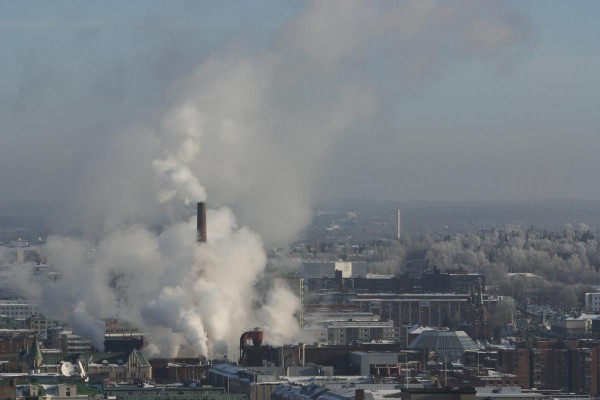
Advertisement
For the past century and a half, mankind has been either directly or indirectly dependent on the burning of fossil fuels to meet its energy requirements. Soot, the major by-product of this process, is directly linked to 20,000 premature deaths each year in the U.S. alone. In fact, outdoor air pollution is regarded as the greatest single killer on the planet, killing 3 million people annually.
Figures released by the World Health Organization (WHO) indicate that upwards of 80 percent of people living in built-up (urban) areas are exposed to pollution in amounts that exceed recommended levels. The situation is worse for those living in low- and middle-income countries like India, where 98 percent of all cities that have more than 100,000 inhabitants do not meet the WHO’s air quality standards. (RELATED: Is air pollution causing global warming, or is it all a hoax? Find out at ClimateScience.news)
In addition to the elevated risk of death, those exposed to these high levels of pollution are at increased risk of stroke, heart disease, various respiratory illnesses including asthma, and lung cancer. As previously reported by Natural News, air pollution also elevates the risk of dementia by as much as 92 percent, since the toxic particles therein can cause the brain to swell. (RELATED: Keep up with other dangers to humans and the environment at Environ.news)
New hope for a solution to this problem has arrived in the form of the “Kaalink,” a product which has been in production by an MIT spin-off company in India for the past three years. The Kaalink turns recycled air pollution into ink that is suitable for both domestic and industrial use.

The device is connected to the end of a vehicle’s exhaust pipe, and by means of a secret process that involves electronic sensors, mechanical actuators and a collection system, captures the unburned carbon emitted by the vehicle and turns it into ink.
The Kaalink can capture as much as 93 percent of the pollution, and after 45 minutes turns it into about an ounce of ink.
The device still needs a lot of work. At the moment, it has to be manually installed by the user, and every two weeks when it’s full, has to be taken to the lab to be exchanged. The developers are working on upgrading the system and building more facilities in other parts of India. They also hope to eventually create variations of the device which can be attached to chimneys, smoke stacks, and other industrial exhaust systems.
The Kaalink team are not the only scientists breaking new ground when it comes to converting pollution into usable products. The Smog Free Tower, an amazing creation by Dutch engineers, converts smog into jewelry. It looks like a 7-meter high version of your air purifier at home, and uses green energy to clean 30,000 cubic meters of air in an hour. The Tower uses ion technology to trap dust particles, which it collects as a powder that contains 42 percent carbon, and then compresses the powder into jewelry.
While these exciting innovations bode well for the future, air pollution is something that we are likely going to have to continue living with for some time to come. Until such time as all pollution is turned into ink, jewelry, and other useful objects, it is probably best to invest in a really good quality air purifier for your home.
In the meantime, watch this space! Who knows what incredible uses scientists will yet discover for the harmful by-products of burnt fossil fuels. Perhaps one day air pollution will even become a highly sought after commodity!
Sources for this article include:
Submit a correction >>
This article may contain statements that reflect the opinion of the author
Advertisement
Advertisements















